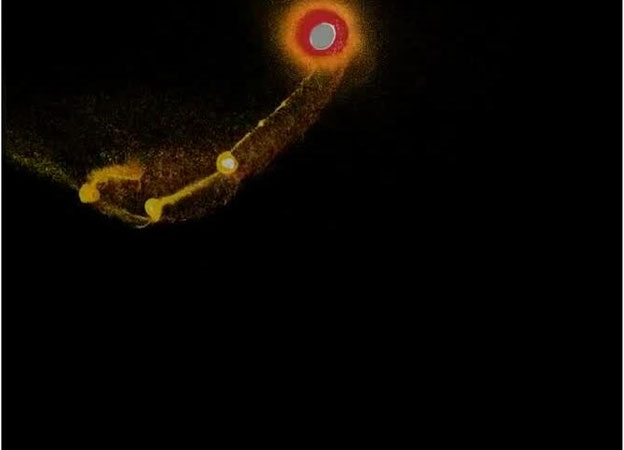The simulation on a supercomputer reveals the results of the collision between the ancient planet Theia and Earth, the event that could create the Moon.
Scientists at Durham University in the UK are using a supercomputer to simulate the collision between the ancient planet Theia, as large as Mars, with Earth 4.5 billion years ago, Phys reported December 4. . According to the simulation, the collision could create an object similar to the Moon.
This is not solid proof of the origin of the Moon, the team is cautious. However, it could be a step in the process of understanding the formation of this natural satellite. The new study is published in the Monthly Notices of the Royal Astronomical Society.
The team performed simulations to track the change in matter four days after the impact between Earth and Theia. The collision gave different results depending on the direction and rotation of Theia, for example, they were merging or moving away. Notably, when Theia was not spinning, the collision created a mass of matter with a mass equal to about 80% of the Moon.
When the scientists gave Theia a slight spin, a moon-shaped object appeared after the impact. This object is orbiting the Earth and will grow as it collects matter from the dust disk around the blue planet. It has an iron core similar to the Moon, while the outer layer contains matter from Theia and ancient Earth. In another study, analysis of the lunar soil sample brought back by the Apollo ships also showed that a mixture of matter from the ancient Earth and another colliding object could have created the Moon.

This could be a step forward in understanding the formation of the Moon.
“It was interesting that some of our simulations produced a mass of matter orbiting the Earth, just a little smaller than the Moon. A disk of dust around the Earth after impact could help this mass of matter increase in mass. I’m not saying it’s the Moon, but it’s definitely an interesting topic to learn more about, ”said Sergio Ruiz-Bonilla, lead author of the study, PhD at the Institute of Computational Cosmology of the University. Durham, said.
The team plans to run more computer simulations while changing the mass, speed, and rotational speed of the Earth and Theia. They wanted to know how these changes would affect the formation of a Moon-like object.
https://khoahoc.tv/


